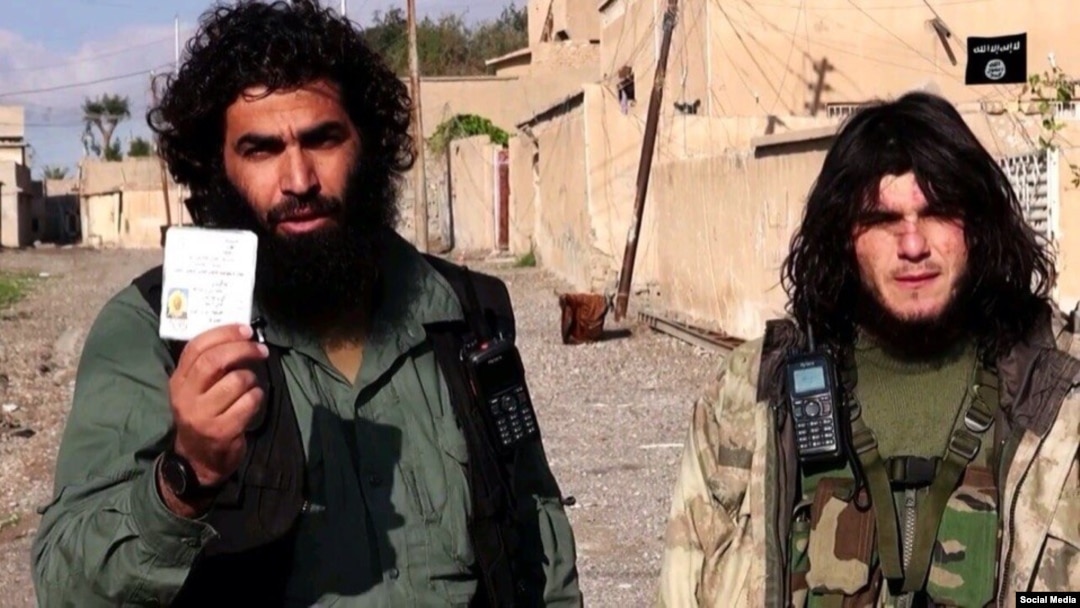Police in the Chechen Republic have released the names of four individuals they say are fighting in Syria.
A spokesman for Chechnya's Interior Ministry told the Caucasian Knot website that three of the men -- named as Hussein Baliyev, Lom-Ali Magomadov, and Surkho Elmurzayev -- went to Syria in the summer of 2014. All three are from the village of Valerik in the western Achkhoi-Martanovsky district.
The fourth man, named as Movsar Murtazaliyev, is from the village of Gikalo, south of the Chechen capital, Grozny, and has been allegedly fighting in Syria since fall 2013.
The Chechen Interior Ministry spokesman said that the republic's security authorities maintained a database of residents of Chechnya who are fighting in Syria.
"Work to identify individuals who are participating in the fighting in Syria with illegal armed groups has been conducted in our republic practically from the start of these events in the country, and the database is continuously updated," the Interior Ministry spokesman told the Caucasian Knot, adding that it was "only recently" that the security authorities had identified the "four individuals fighting on the side of the Islamists in Syria."
Despite the Chechen Interior Ministry's comments, however, it is likely that among the ethnic Chechen militants fighting in Syria and Iraq there are rather more than four individuals from Chechnya. It is also likely that the Chechen authorities are aware of more than four individuals.
The decision to publicly name four Chechen residents fighting in Syria is almost certainly a political move by the Interior Ministry, designed to both show that Chechen security authorities are monitoring and have intelligence about Chechens fighting in Syria, and to back up assertions by Chechen and Russian officials that there are not very many Chechens from Chechnya in Syria.
Although the Chechen government only admitted in June 2013 that residents of the Chechen Republic were fighting in Syria, reports that ethnic Chechens (as well as individuals from some other of Russia's North Caucasian republics) were taking part in the armed insurgency emerged around fall 2012.
Initially, the head of the Chechen Republic, Ramzan Kadyrov, denied that Chechens were fighting in Syria at all.
In more recent statements, Kadyrov has insisted that most militants in Syria identified in the media as "Chechens" are from the Chechen diaspora in Europe rather than from the Chechen Republic. Kadyrov has also blamed Western intelligence agencies for recruiting Chechens from Chechnya to fight for the IS group.
Russian officials, when they have commented on the issue of Chechens in Syria, have tended to adopt a similar view to Kadyrov. In January, Ilya Rogachev, the head of the Russian Foreign Ministry's Department for New Challenges and Threats, said that Chechen militants fighting with the IS group in Syria were not Russian citizens but from Georgia's Pankisi Gorge.
It is not clear which group the four men are allegedly fighting with in Syria. There are ethnic Chechens, including from the Chechen diaspora community in Europe as well as ethnic Kists from Georgia's Pankisi Gorge, in a number of different groups in Syria, including the IS group.
Recent postings by pro-IS accounts on the Russian social network VKontakte have also identified ethnic Chechens from the IS group as being in Iraq. One of those identified as being in Iraq goes under the nom de guerre Salakhaddin al-Shishani and is a member of the predominantly Chechen IS faction Katibat al-Aqsa, a group that had fought in Kobani until the IS militants retreated from that Syrian town earlier this month.
-- Joanna Paraszczuk


